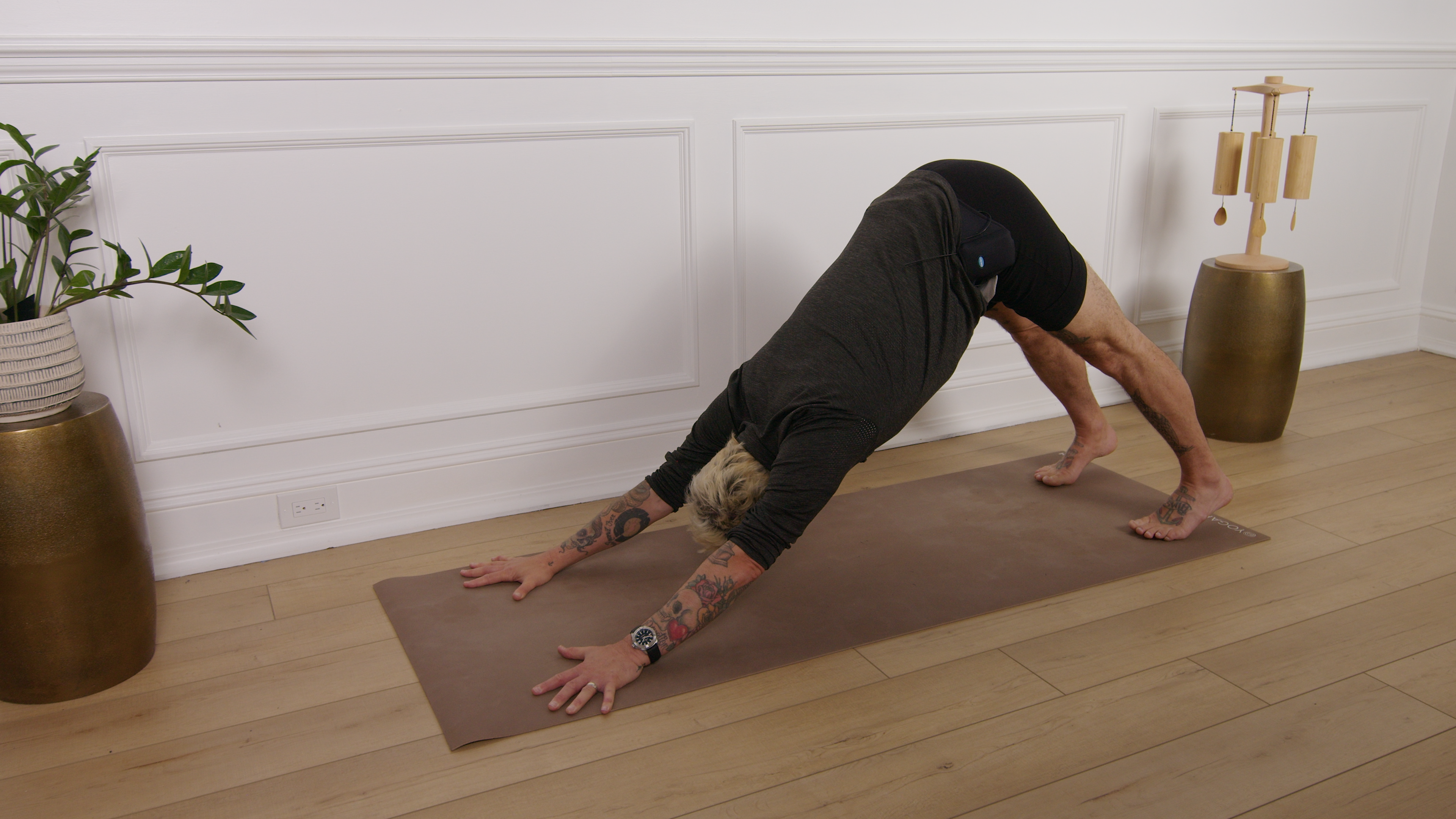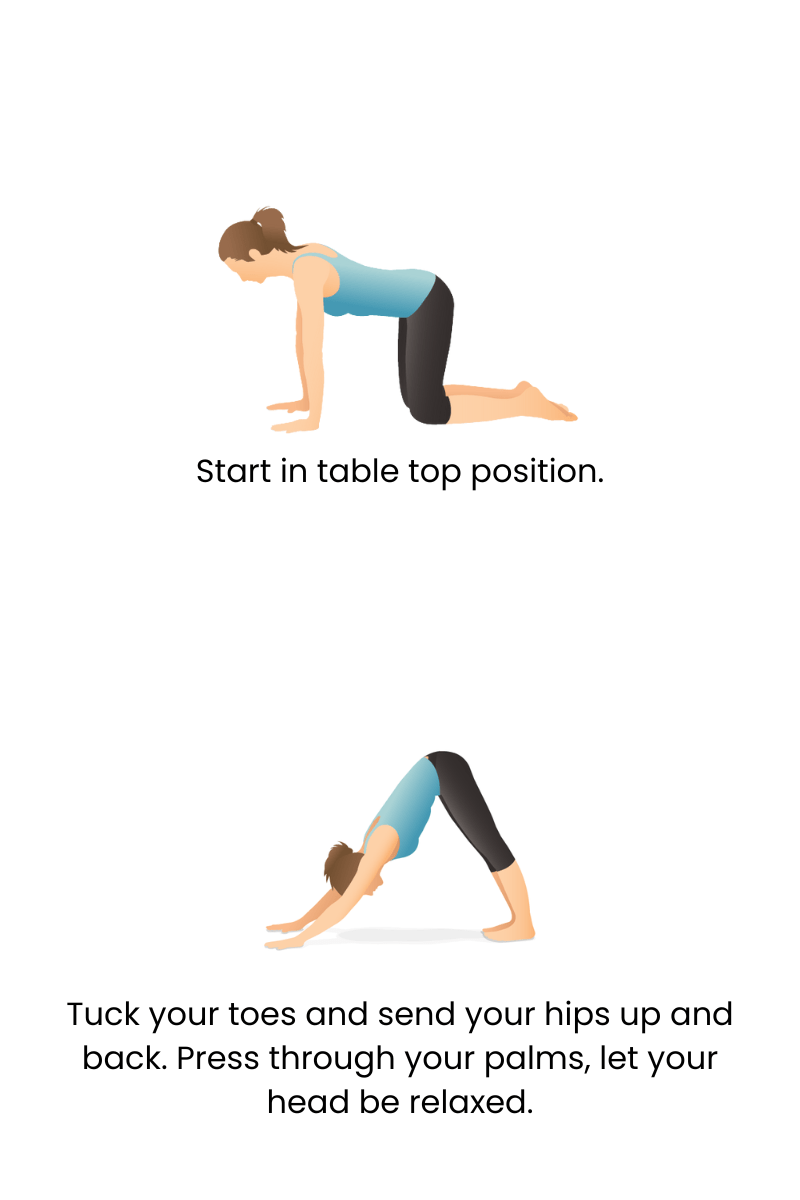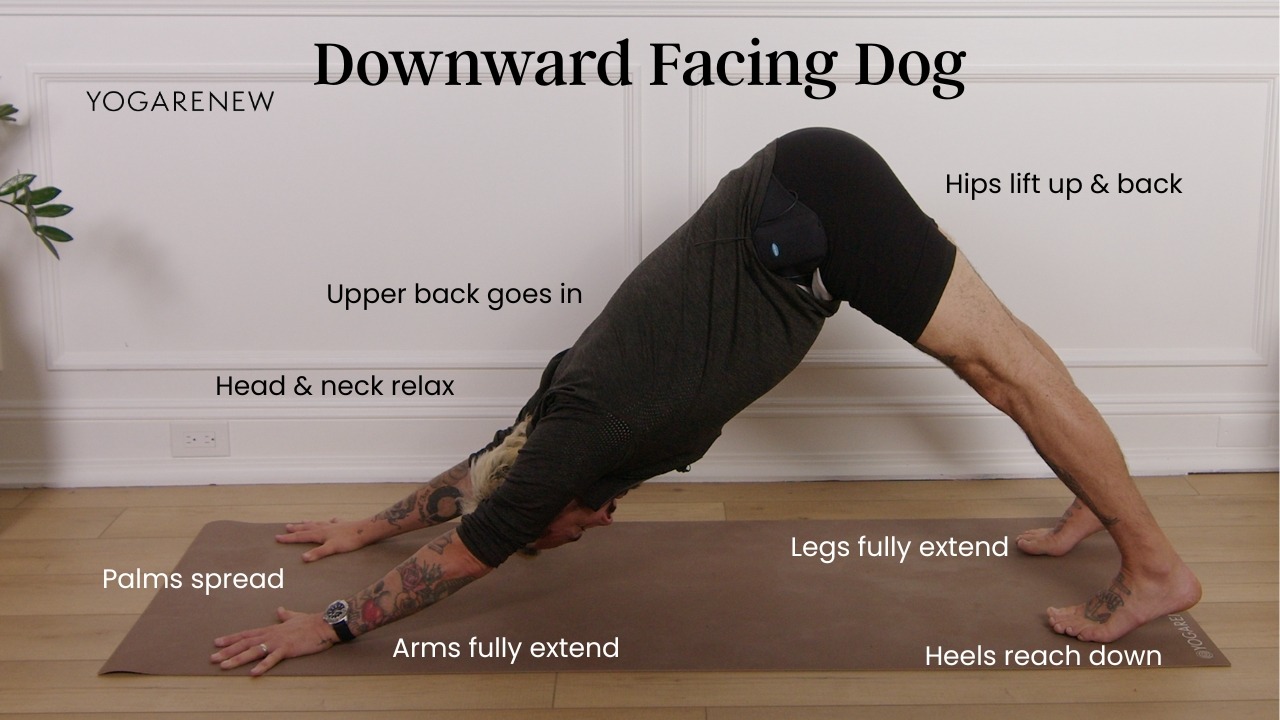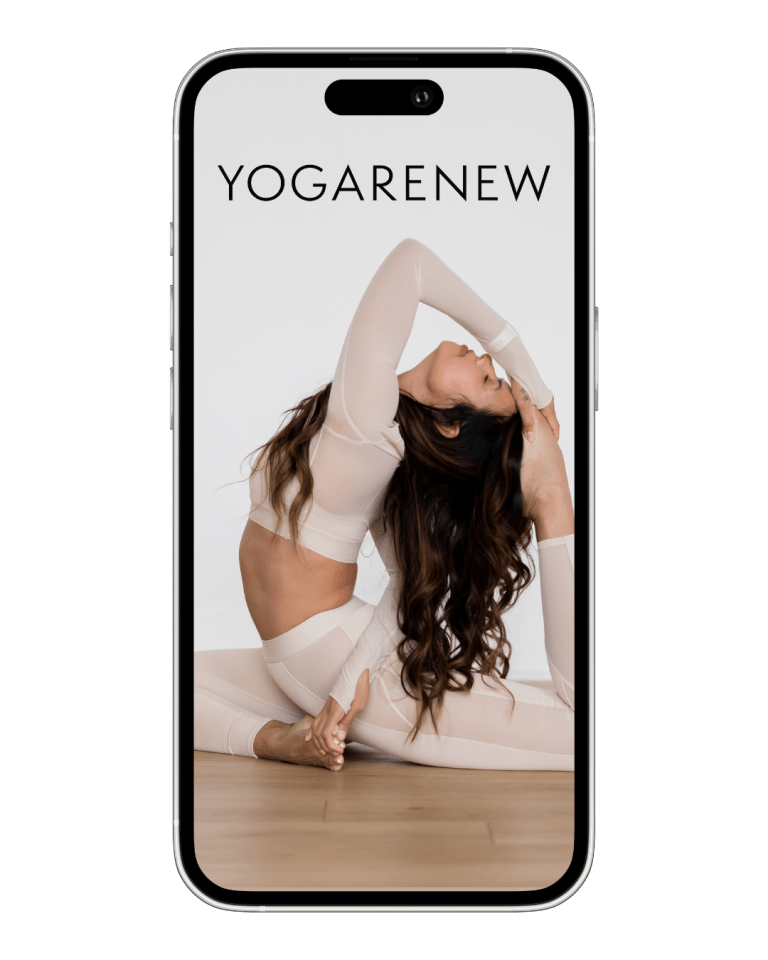What is Downward Facing Dog?
English Name: Downward-Facing Dog Pose
Sanskrit Name: Adho Mukha Svanasana (pronounced AH-doh MOO-kah shvah-NAHS-uh-nuh)
Category: Inversion, Standing Pose, Strength-Building, All Levels

English Name: Downward-Facing Dog Pose
Sanskrit Name: Adho Mukha Svanasana (pronounced AH-doh MOO-kah shvah-NAHS-uh-nuh)
Category: Inversion, Standing Pose, Strength-Building, All Levels
Downward-Facing Dog, or Adho Mukha Svanasana, is one of the most recognizable and widely practiced yoga poses. Often considered a cornerstone of modern yoga, it serves as both a transitional and resting pose. This powerful inversion stretches the entire back body, builds strength in the shoulders and legs, and calms the nervous system.
Named after the way a dog naturally stretches its body, this pose encourages length and alignment in the spine while grounding and energizing the entire body. It’s accessible to most practitioners with proper technique and offers numerous benefits whether practiced briefly or held for longer periods.


1. Wrist or Shoulder Injury: Use props or modify to reduce weight-bearing
2. High Blood Pressure or Glaucoma: Avoid holding for long or invert gently
3. Late Pregnancy: May become uncomfortable as belly grows—modify or avoid
4. Ear Infections or Sinus Congestion: The inverted position may cause pressure
5. Carpal Tunnel Syndrome: Modify with fists, blocks, or forearms
Downward-Facing Dog is a full-body pose that energizes, stabilizes, and restores. It builds strength and flexibility while inviting calm, rhythmic breathing. It’s a key posture in many yoga styles—from vinyasa to restorative—and can act as both a transition and a destination. Practicing Adho Mukha Svanasana regularly supports spinal health, relieves tension, and cultivates a sense of grounded vitality.
It stretches and strengthens the entire body, improves circulation, and transitions smoothly between poses.
Not necessarily. Focus on lengthening the spine and keeping alignment rather than forcing the heels down.
Yes—keep the knees bent and focus on lifting the hips and lengthening the spine.

Explore classes & pose tutorials for any style, format, duration or experience level with a free account in the YogaRenew app. Or subscribe and gain access to workshops, live classes and more.